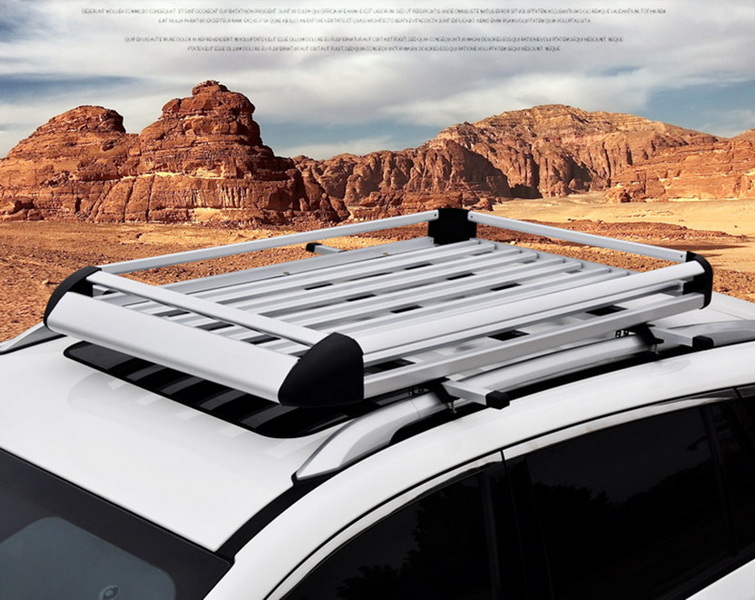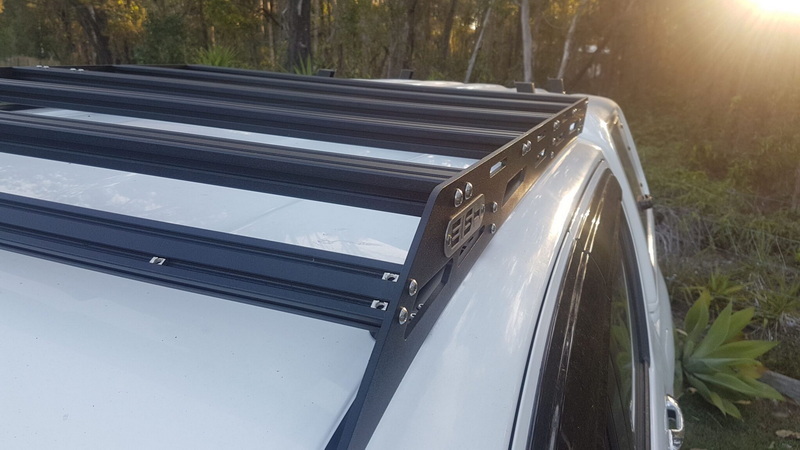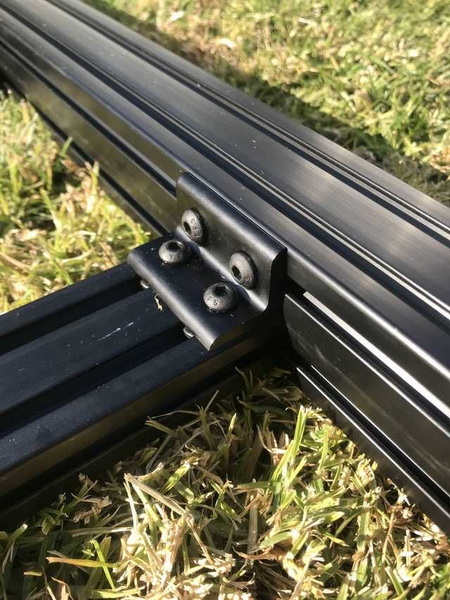Content Menu
● Introduction
● Advantages of Aluminum Roof Racks
>> Lightweight Nature
>> Durability and Strength
>> Customization Options
● DIY Aluminum Roof Rack Projects
>> Basic Tools and Materials Needed
>> Step-by-Step Guide to Building Your Own Rack
>> Common Mistakes to Avoid
● Accessories for Aluminum Roof Racks
>> Types of Accessories
>> Enhancing Functionality
● Conclusion
● Related Questions
>> 1. What is the weight limit for an aluminum roof rack?
>> 2. Can I install an aluminum roof rack myself?
>> 3. How do I maintain my aluminum roof rack?
>> 4. Are aluminum roof racks more expensive than steel ones?
>> 5. Can I use an aluminum roof rack for off-road vehicles?
Introduction
In the world of automotive accessories, roof racks have become essential for those who seek to maximize their vehicle's utility. Whether you're an outdoor enthusiast, a frequent traveler, or simply someone who needs extra storage space, a roof rack can significantly enhance your vehicle's functionality. Among the various materials available for roof racks, aluminum stands out as a top choice due to its unique properties. This article will explore the benefits of using an aluminum roof rack for your vehicle, focusing on the advantages of aluminum extrusion roof racks, DIY projects, accessories, and installation tips.

Advantages of Aluminum Roof Racks
Lightweight Nature
One of the most significant advantages of aluminum roof racks is their lightweight nature. Aluminum is known for its excellent strength-to-weight ratio, making it an ideal material for roof racks. A lighter roof rack means less added weight to your vehicle, which can lead to improved fuel efficiency. When you're driving with a heavy load, every bit of weight counts. By choosing an aluminum roof rack, you can carry your gear without significantly impacting your vehicle's performance.
Durability and Strength
Aluminum is not only lightweight but also incredibly durable. It is resistant to rust and corrosion, which is particularly important for outdoor use. Unlike steel, which can rust when exposed to moisture, aluminum maintains its integrity over time, even in harsh weather conditions. This durability ensures that your aluminum extrusion roof rack will last for many years, providing reliable support for your gear.
Moreover, aluminum roof racks can handle substantial loads without bending or breaking. This strength is crucial for those who plan to carry heavy items such as kayaks, bicycles, or camping gear. With an aluminum roof rack, you can have peace of mind knowing that your equipment is securely fastened and that the rack can withstand the rigors of travel.
Customization Options
Another significant benefit of aluminum roof racks is the customization options available. Aluminum extrusion allows for a variety of designs and configurations, making it easy to create a roof rack that meets your specific needs. Whether you need a simple crossbar setup or a more complex modular system, aluminum can be tailored to fit your requirements.
DIY enthusiasts will appreciate the flexibility that aluminum extrusion offers. You can design a roof rack that perfectly fits your vehicle and your lifestyle. This customization can include additional features such as integrated lighting, adjustable crossbars, or even solar panel mounts. The possibilities are endless, allowing you to create a roof rack that is not only functional but also uniquely yours.
DIY Aluminum Roof Rack Projects
Basic Tools and Materials Needed
Building your own aluminum roof rack can be a rewarding project. To get started, you will need some basic tools and materials. Here's a list of what you'll need:
- Aluminum Extrusion Profiles: These will form the main structure of your roof rack. Choose profiles that are strong yet lightweight.
- Mounting Brackets: These will secure the rack to your vehicle's roof.
- Bolts and Nuts: Use stainless steel fasteners to prevent rust.
- Drill: For making holes in the aluminum and your vehicle's roof if necessary.
- Saw: A miter saw or hacksaw to cut the aluminum profiles to the desired length.
- Measuring Tape: To ensure accurate measurements.

Step-by-Step Guide to Building Your Own Rack
1. Measure Your Vehicle: Start by measuring the width of your vehicle's roof. This will determine the length of the aluminum profiles you need.
2. Cut the Aluminum Profiles: Using your saw, cut the aluminum profiles to the desired lengths. You will need two long pieces for the crossbars and two shorter pieces for the side supports.
3. Assemble the Frame: Lay out the cut pieces on a flat surface and assemble them into a rectangular frame. Use the mounting brackets to connect the corners securely.
4. Drill Holes for Mounting: If your vehicle requires it, drill holes in the roof for the mounting brackets. Ensure that the holes are properly sealed to prevent leaks.
5. Attach the Rack to Your Vehicle: Position the assembled rack on your vehicle's roof and secure it using the mounting brackets. Make sure everything is tight and secure.
6. Test the Rack: Before loading it with gear, test the stability of the rack by shaking it gently. Ensure that it is firmly attached and can handle weight.
Common Mistakes to Avoid
When building your own aluminum roof rack, there are several common mistakes to watch out for:
- Inaccurate Measurements: Always double-check your measurements before cutting. An incorrect cut can lead to a poorly fitting rack.
- Neglecting Weight Limits: Be aware of your vehicle's roof weight limit. Overloading the rack can damage your vehicle and compromise safety.
- Poor Sealing: If you drill holes in your vehicle's roof, ensure they are properly sealed to prevent water leaks.
Accessories for Aluminum Roof Racks
Types of Accessories
To enhance the functionality of your aluminum roof rack, consider adding various accessories. Some popular options include:
- Cargo Boxes: These provide additional storage space and protect your gear from the elements.
- Bike Mounts: Perfect for cyclists, these mounts securely hold bicycles in place during transport.
- Kayak Carriers: Specialized carriers designed to hold kayaks securely on your roof rack.
- Solar Panel Mounts: For those who enjoy off-grid camping, solar panel mounts can be integrated into your roof rack design.
Enhancing Functionality
Accessories can significantly improve the utility of your aluminum roof rack. For example, adding a cargo box can help keep your gear organized and secure, while bike mounts allow you to transport your bicycles without taking up space inside your vehicle. Additionally, solar panel mounts can provide a sustainable energy source for your camping trips, making your adventures more enjoyable.
Conclusion
In conclusion, aluminum roof racks offer numerous benefits for vehicle owners looking to enhance their storage capabilities. Their lightweight nature, durability, and customization options make them an excellent choice for anyone in need of extra space. Whether you choose to build your own aluminum extrusion roof rack or purchase a pre-made one, you can enjoy the advantages that come with this versatile accessory. With the right accessories and proper installation, an aluminum roof rack can transform your vehicle into a more functional and efficient travel companion.

Related Questions
1. What is the weight limit for an aluminum roof rack?
The weight limit for an aluminum roof rack varies depending on the vehicle and the specific rack design. Always check your vehicle's manual and the manufacturer's specifications for guidance.
2. Can I install an aluminum roof rack myself?
Yes, many aluminum roof racks are designed for easy installation. With basic tools and some DIY skills, you can install a roof rack yourself.
3. How do I maintain my aluminum roof rack?
To maintain your aluminum roof rack, regularly clean it with mild soap and water. Inspect for any signs of wear or damage, and ensure that all fasteners are tight.
4. Are aluminum roof racks more expensive than steel ones?
Aluminum roof racks can be more expensive than steel options due to the material's properties and manufacturing processes. However, their durability and lightweight nature often justify the higher cost.
5. Can I use an aluminum roof rack for off-road vehicles?
Yes, aluminum roof racks are suitable for off-road vehicles. Their strength and resistance to corrosion make them ideal for rugged environments.






















